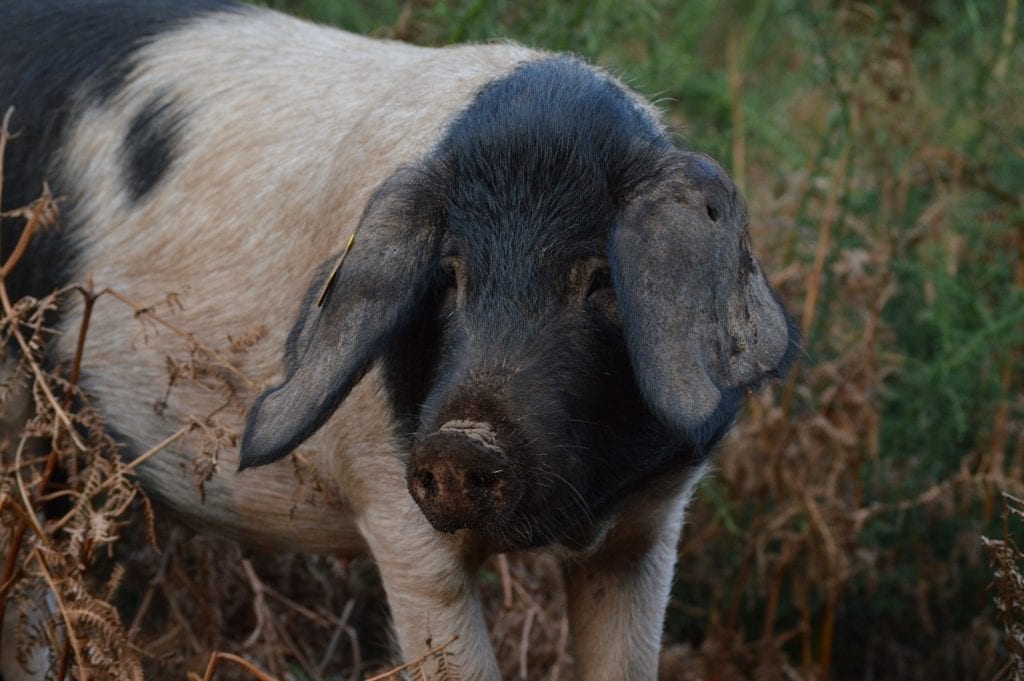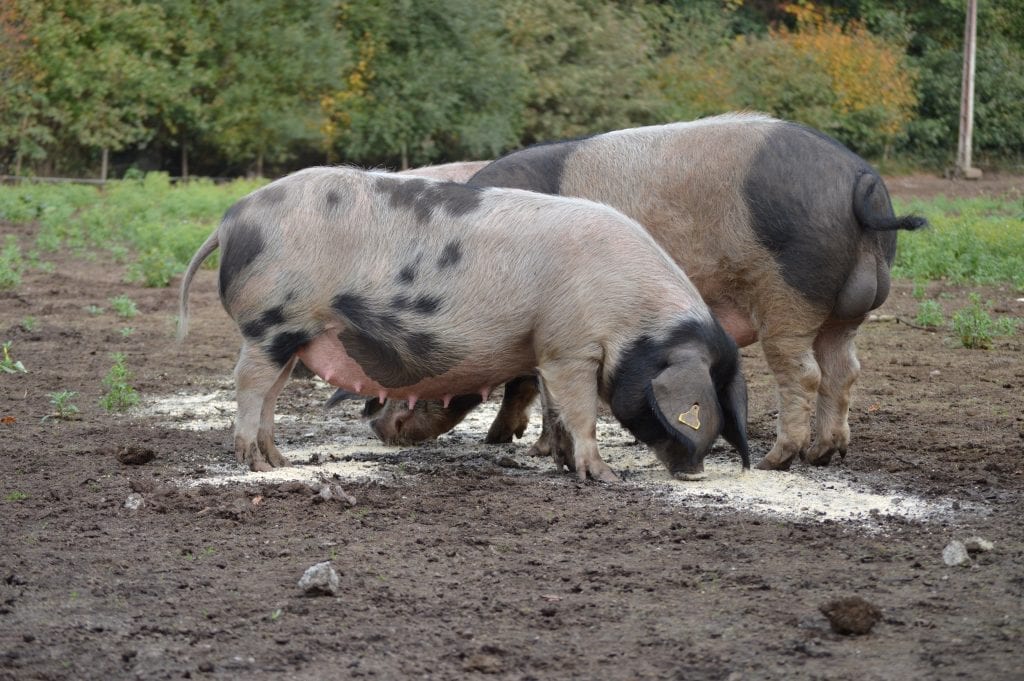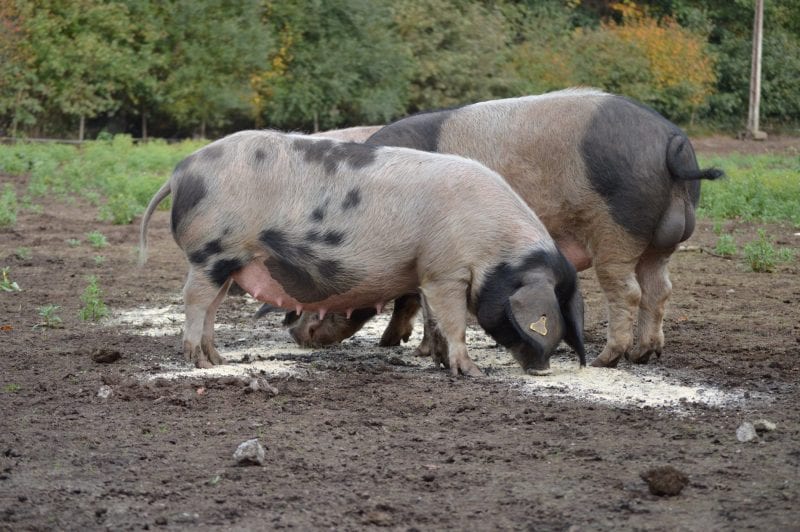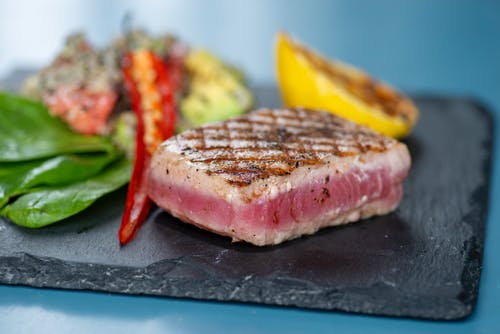In the stables of an autonomous community much better known for its octopus, its shellfish and other great products of its gastronomy, the Celtic swine from Galicia. We are talking about a very characteristic Galician autochthonous breed and from which high quality meats are made. But the problem that it has suffered for decades is that it is in extinction path, although it can still be found at some points like Fogar do Selmo. A rural house with restaurant and own farm in which these animals inhabit, while their keepers try to ensure the survival of a pig recognizable by its large size, its long ears and elongated body. Below we will tell you the whole history of this breed, in addition to the culinary use of its meats.
History and current situation
The Celtic swine of Galicia is a race from a mix or cross between two others (the european wild boar and the subgenre striatosus). While others with a similar origin have already disappeared both in northern Spain and in other European countries, this Galician woman is still present, although with serious difficulties. The raza was the most important in the Galician territory until the beginning of the twentieth century, at which point it began to suffer a constant reduction.
The population census was decreasing for a clear main reason: the arrival of foreign races and its crossing with them that it offered higher meat yield as well as better priming time. Progressively the descent was falling, already in 1951 there was still a very low percentage of representation of the celtic swine and by the eighties it almost disappeared.

For this reason, the breed is currently listed in Danger of extinction, although some very localized farming families throughout the autonomous community continue to bet on it. They have been the basis for the fight to get this pig back since the 1999s. In XNUMX the Celtic Swine Breed Breeders Association (asoporcel) to join the cause.
Today, the Celtic swine of Galicia lives in stables in the province of Ourense, in the south of the de Lugo and other regions of A Coruña. Here below you can see how its census evolution has been in the last ten years, in this infographic prepared by some Galician students, authors of the websites Or Fogar.
This is the Celtic pig of Galicia
This breed that enjoys the 100% Native Celtic identification seal has specific morphological characteristics, linked to a big size already a great rusticity. A) Yes, the Celtic swine of Galicia It is highly developed in both its skeletal and muscular systems, something that allows it to graze in Galician lands. Where it feeds on chestnuts, acorns and sprouts vegetables on vast green grounds. Therefore, it is an animal perfectly adaptable to exploitation in an extensive regime. Although, unfortunately, its decline in the autonomous community has diminished this possibility.
Thus, it is a pig in which its big floppy ears, which even cover their eyes. Its neck is long and narrow, but strong, while both loins share the same adjectives. Then he celtic pig tail It is thick, but equally elongated, presenting at its tip a bristle tassel (hairs). In reference to its extremities, it should be noted that the anterior third is stronger than the posterior, rather scarce.

On the other hand, as for its color characteristic, it depends on the variety, as there are three varieties or ecotypes other than this same breed:
- El carballino It has black or reddish spots that can even cover its entire body. It is typical of northern Galicia, specifically in the area of Bergantiños and Carballo.
- Instead, the Santiago It has a white layer, extending through the south of Galicia, specifically by Santiago de Compostela.
- Finally there is the Ginger, native to the mountains of Lugo and whose small slate pigmentations in the shape of moles identify it.
Its meat and culinary uses
Quality, juiciness and intense reddish color They are highly valued in the meat of this Galician breed with which delicious dishes are made with a local product. A clear example of this can be seen in this following video of Or Fogar, etched in the entrails of Fogar Do Selmo. This rural house offers its visitors some recipes with the Celtic swine of Galicia as the protagonist in any of its parts, taken from the farm itself to the table. Its preparation can be with a shoulder or rib in the oven, apart from including other pieces in the traditional Cooked Galician.
Between its tenderness, aroma and flavor, the Celtic swine of Galicia in the kitchen it is a unique delicacy that provides a high content of minerals, vitamins, iron and essential fatty acids. However, its reduced consumption over time has led to the raza to a complicated survival situation. Because the reality is that if an animal stops eating, it also stops surviving. Since asoporcel, the fight for non-extinction continues.







